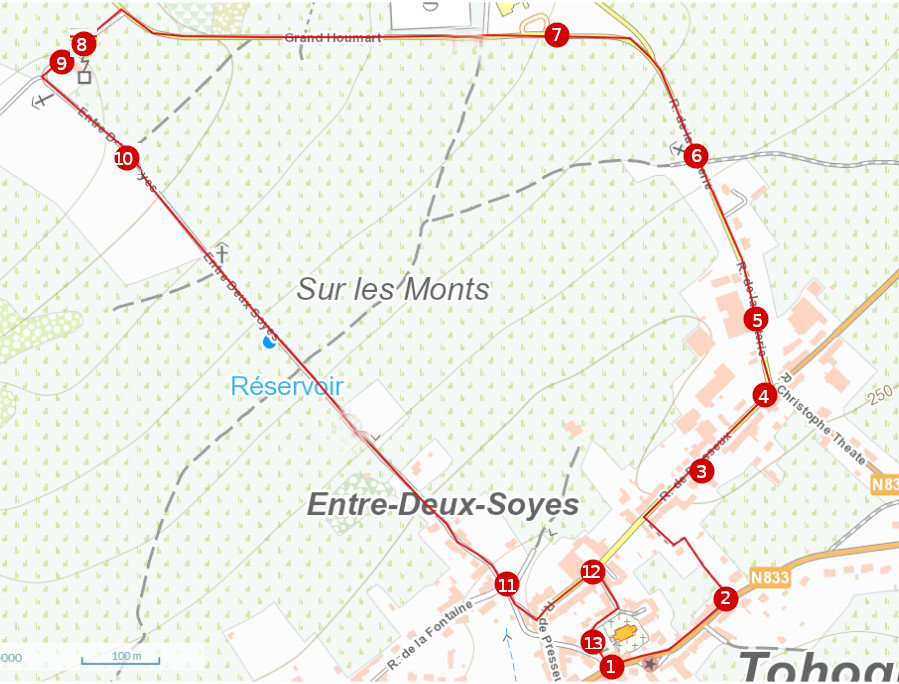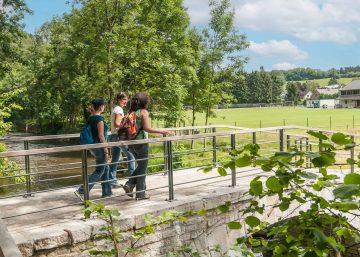Departure
The former municipality of Tohogne included the sections of Verlaine, Hinonsart, Hermanne, La Bourlotte, Warre, Longueville, Coquaimont, Tohogne, La Hesse, Grand and Petit-Houmart. Tohogne is situated in the centre of a fertile massif almost entirely bypassed by two rivers: the Ourthe and the Néblon. Wherever you come from, you have to climb to get there. Its subsoil is rich in limestone and sandstone. As for the origin of its name, a valid suggestion is that the suffix « nius » follows the name of a person called Taho or Toho, which would give: villa (farm) of Taho. Located in an area that was densely occupied by the Romans, Tohogne appears to have been the seat of an agricultural villa from the 4th century. Evangelisation affected this region early on and was the work of the monks of the Stavelot Abbey in the 7th century. As you drive through the village, you will notice the Romanesque church, an imposing building from the 11th century. Its economic development is not very different from that of other villages in the Canton of Durbuy. The clearing of uncultivated land in the 19th century encouraged the development of agriculture. At the beginning of the last century, more than half of the population was still engaged in agriculture. In the course of the century, the woods and meadows expanded. At present, three large farms still exist, and tourism is discreet.
The proposed walk will allow you to discover some of the village’s particularities and appreciate the charm of the surrounding countryside.

